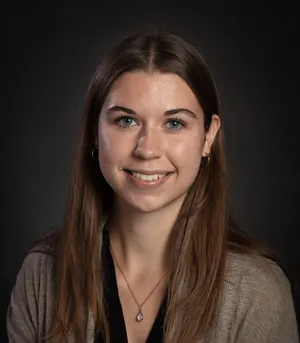NATIONAL MUSEUM OF NATURAL HISTORY
Explore Viral Bat Research and More Natural History Programs This March
Tune in to programs about the original paleo diet, an environmental film festival and more at the National Museum of Natural History.
:focal(2007x1338:2008x1339)/https://tf-cmsv2-smithsonianmag-media.s3.amazonaws.com/filer_public/01/b9/01b9f446-3ef3-4ff4-97ee-49d9accc2090/image001_1.jpg)
Could Caring for the Environment Help Prevent Future Viral Outbreaks?
March 8, 12:30 p.m. ET
In the wake of a global pandemic, research into the prevention of viral outbreaks has never been more vital. In 1994, scientists first characterized the Hendra virus, a pathogen that spreads from flying foxes to other mammals like horses and even humans. This intricate transmission route has fascinated researchers for years and may be the key to understanding how environmental conservation could defend against future viral outbreaks.
Disease spillovers are events in which viruses spread from their typical hosts to new hosts, a phenomenon which is becoming increasingly common. Central to these spillover events, bats have long been considered primary vectors of numerous diseases around the world. This insight drove wildlife disease ecologist and veterinarian Alison Peel to investigate the interactions between broad environmental changes, ecology and bat-borne diseases like the Hendra virus. Peel’s new research suggests that caring for the environment and even preserving the habitats of the virus-spreading bats could help prevent disease spillovers on our shared planet.
Tune into this online event on March 8 to learn more about Peel’s research. The webinar is part of the ongoing NMNH series, “Shared Planet, Shared Health,” which spotlights leading research on the interconnection between humans, nonhuman animals, plants and their shared environment. Moderating the discussion will be Ashley Peery, educator for the museum’s exhibition Outbreak: Epidemics in a Connected World.
Learn How Smithsonian Scientists are Reconstructing the Ancient Human Diet
March 16, 11:30 a.m. ET
/https://tf-cmsv2-smithsonianmag-media.s3.amazonaws.com/filer_public/56/96/56966ba5-b2a6-4c98-96e0-b077c3f41ddc/image002.jpg)
Small critters like rats and lizards do not sound like delicious dinner entrees today, but new research suggests that they may have played an important role in the diets of ancient humans. Grace Veatch, a zooarchaeoligist at the Smithsonian, has been conducting an investigation of the small game remains scattered at the Liang Bua excavation site on the island of Flores, Indonesia. The site was home to a pint-size species of hominin known as Homo floresiensis, which occupied the region over 50,000 years ago. The incredible preservation at Liang Bua has allowed Veatch to gather evidence about the diets of these hominins and highlight the differences between modern and ancient meals.
In this online event on March 16, Veatch will discuss her recent research and ongoing fieldwork in Indonesia. The webinar will be moderated by Smithsonian paleoanthropologist and educator Briana Pobiner, and is part of the museum’s Human Origins Today (HOT) Topic series.
Experience the DC Environmental Film Festival with These Three Screenings at the NMNH
This March, the DC Environmental Film Festival (DCEFF) will be showcasing some of the year’s best environmental documentaries. DCEFF has been a collaborative partner with the National Museum of Natural History for over 30 years and will be hosting free public screenings of several of their films in the museum’s Baird Auditorium.
March 17, 7:00 p.m. ET/https://tf-cmsv2-smithsonianmag-media.s3.amazonaws.com/filer_public/5e/b1/5eb16ecd-55a2-4697-a999-31aed6751cc3/image003.jpg)
While the fashion industry does not spring to mind when thinking about the environmental crisis, it has actually been cited as a leading cause of carbon emissions and pollution. In this striking film, acclaimed fashion designer Amy Powney transforms her entire business to create a sustainable collection that will minimize the environmental impact of her clothing. In the following years, her personal environmental activism journey acts as a catalyst for a much larger societal shift. To learn more about how the fashion industry can reduce its environmental footprint, watch “Fashion Reimagined” and stay for the post-film conversation at NMNH on March 17.
March 18, 2:00 p.m. ET/https://tf-cmsv2-smithsonianmag-media.s3.amazonaws.com/filer_public/0f/61/0f61c984-f14e-4422-8777-b791fbaa50ca/image004.jpg)
Interlaced throughout American history is the story of both racial trauma and pride. In his first feature film, director Jon-Sesrie Goff takes viewers through coastal South Carolina to uncover stories of the Black community in his own hometown. While the land is now a popular wedding destination, Goff’s film serves as a reminder of the painful, cross-generational consequences of racism, posing questions about home and ownership. To learn more about this impactful journey, watch “After Sherman” and stay for the post-film conversation at NMNH on March 18.
March 18, 7:00 p.m. ET/https://tf-cmsv2-smithsonianmag-media.s3.amazonaws.com/filer_public/76/f9/76f91ff7-27c1-41fb-a993-8c1e1542a442/image005.png)
On a tiny strip of remote land over a hundred miles off the coast of Nova Scotia, you will find marine litter. You will also find Zoe Lucas, a naturalist and environmentalist, picking up that litter and diligently documenting her findings. Sable Island has been Lucas’ home for over 40 years. Through the use of eco-friendly filming techniques, Lucas captures both her love for the island and her powerful activist’s spirit. To see this year's winner of the DCEFF Flo Stone & Roger D. Stone Award for Outstanding Artistry in Filmmaking, join the museum community on March 18 to watch “Geographies of Solitude” and stay for the post-screening discussion.
Can’t make one of the programs? Check out the museum’s archive of past programs.
Related Stories
Explore How Fire Shaped Human Evolution and More Natural History Programs This March
To Uncover the Origins of Diseases, Smithsonian Researchers Dust Bat Specimens for Viral Fingerprints
Viking Women and Black-Footed Ferrets Are Coming to the Museum This Holiday Season
Discover How Animals Show Their Love and Other Natural History Programs This February

